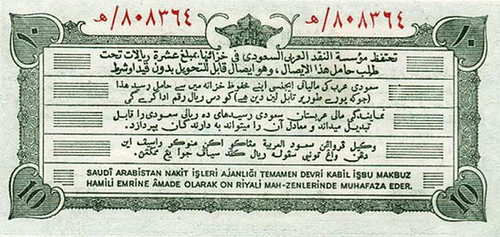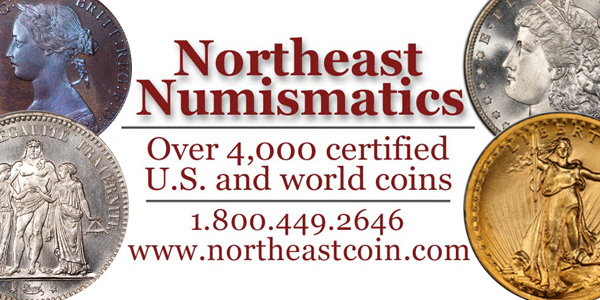
PREV ARTICLE
NEXT ARTICLE
FULL ISSUE
PREV FULL ISSUE
SAUDI BANKNOTES INSPIRED BY HAJJ PILGRIMAGEThe Hajj — Arabic for “pilgrimage” — is a five-day religious pilgrimage to Mecca and nearby holy sites in Saudi Arabia that all Muslims who are physically and financially able must perform at least once in their lives. This article describes how the Hajj inspired the creation of Saudi Arabian banknotes. -Editor  The riyal became the currency of Saudi Arabia since it was founded in 1932. Before that the currency was being used only in the Hijaz region. The first Saudi currency bearing the name of the country, which was smaller and lighter than its predecessor, was minted in silver in 1935. The Saudi Arabian Monetary Authority (SAMA), the second-oldest central bank in the Arab world, was created in 1952 to develop and unite the Saudi monetary system. Given the fast-paced growth of the economy and increasing revenues, King Abdul Aziz was aware that it was not realistic to continue using metal coins and there was a need for a more practical form of currency. In particular, piles of silver Saudi riyals were a heavy burden for pilgrims to carry with them during Hajj seasons. In 1953, the king took a courageous decision to issue the first Saudi banknotes. They were known as “pilgrims’ receipts,” each worth 10 silver riyals. The first batch of 5 million were printed in Arabic, Persian, English, Urdu, Turkish and Malayan. Pilgrims welcomed the new paper currency and it quickly became widely accepted throughout the Kingdom. Its success encouraged confidence among Saudi traders and citizens. However, pilgrims started to collect the receipts as souvenirs and gifts to take back to their home countries, which prompted the Ministry of Finance and Economy to ban commercial use of them overseas. The acceptance and popularity of the receipts persuaded SAMA to re-issue them in 1954, with the addition of a new 5 riyal denomination, which was followed by 1 riyal pilgrims’ receipt in 1956. SAMA realized that citizens and pilgrims were happy for the old metal coins to be replaced with the paper notes, so they decided to keep using it after Hajj, rather than returning to the old currency. In June 1961, Saudi banknotes were issued for the first time, in denominations of 1, 5, 10, 50 and 100 riyals. As a result, the pilgrims’ receipt was phased out in 1965. Hajj is not only the reason behind the introduction of Saudi banknotes, it has also played an important role in the increasing the value of the currency. As the number of pilgrims coming to Makkah has continued to grow every year, the demand for riyals has increased at banks and local and foreign exchanges; three times as many riyals are purchased during Hajj season than during the rest of the year. This inflates its value and refreshes the market. The most-exchanged foreign currencies during Hajj are the US dollar, the euro, the Singapore dollar, the Indian rupee, the Indonesian rupiah, the Emirati dirham and the Malaysian ringgit. Thanks to the August 28, 2018 issue of News & Notes from the Society of Paper Money Collectors (edited by Loren Gatch) for the link to Arab News. Thanks also to the Vox article linked below, where I borrowed my description of the Hajj. Love their subtitle: "It’s like Burning Man, but for Muslims. Okay, it’s nothing like Burning Man." -Editor To read the complete article, see: For more information, see:  Wayne Homren, Editor The Numismatic Bibliomania Society is a non-profit organization promoting numismatic literature. See our web site at coinbooks.org. To submit items for publication in The E-Sylum, write to the Editor at this address: whomren@gmail.com To subscribe go to: https://my.binhost.com/lists/listinfo/esylum All Rights Reserved. NBS Home Page Contact the NBS webmaster 
|